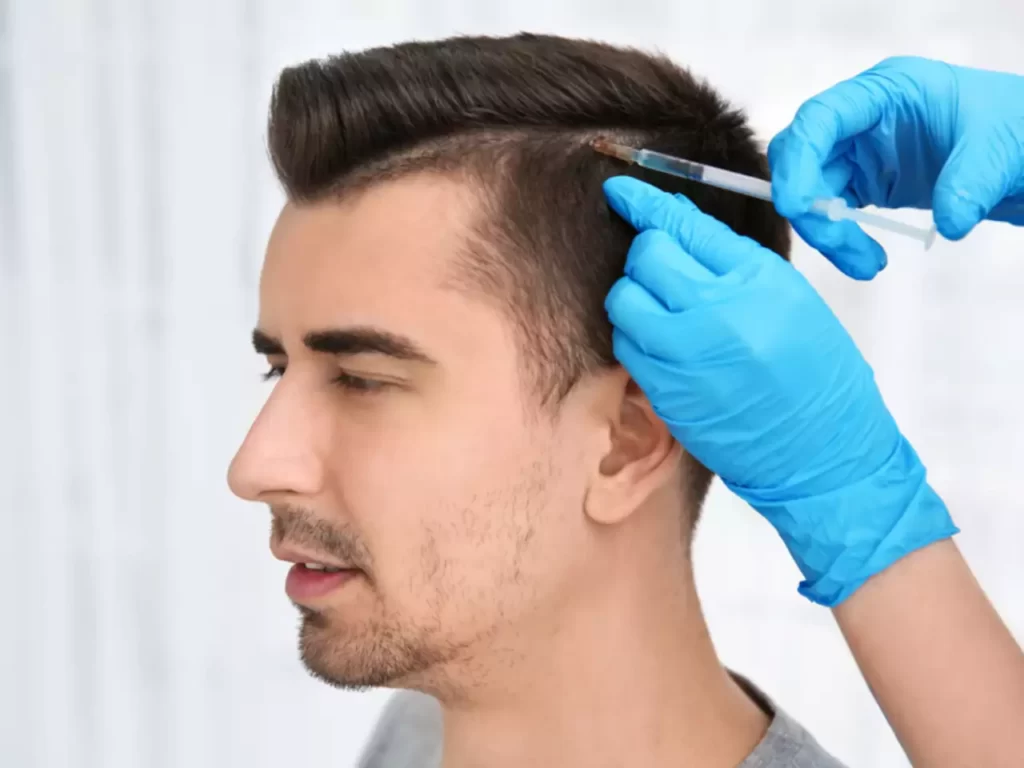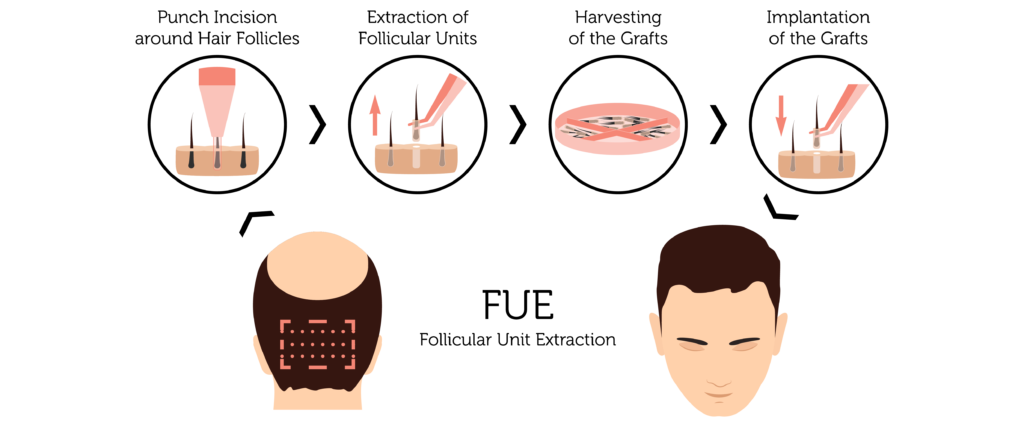What is the Success Rate of Hair Transplant?
Success Rates of Hair Transplant Procedures
Hair loss can take a toll on your mental health and self-esteem. It can also affect your relationship and make you feel dissatisfied with your appearance. If you’re experiencing hair fall and want to regain fuller-looking hair then a hair transplant can be the best option for you. With the help of this advanced surgery, you can restore your receding hairline and feel more confident. During this procedure, hair is taken from thicker parts of the scalp or other body parts and grafted to the balding or thinning section of the scalp. However, since this procedure is very expensive you may be worried thinking about the success rate of hair transplant. Let’s decode how effective this procedure is and how soon you can start seeing results.
Does Hair Transplant Work?
A hair transplant is one of the best hair restoration methods that can help you achieve fuller and more natural-looking hair. You’ll be glad to know that it is more successful and offers better results than over-the-counter hair growth products. Most people start seeing good results two to eight months after the hair transplant. After the surgery, ten to eighty percent of your transplanted hair will grow back fully in three to four months. The success rate of hair transplants will vary from person to person depending on their age, health condition, extent of hair loss, expertise of the surgeon, and quality of donor hair. Transplanted hair gets thin over time like regular hair. If you have widespread balding and thinning issues you may not be a good candidate for a hair transplant. You should not undergo a hair transplant if you have pre-existing health conditions or do not have enough donor hair. Before undergoing this procedure you should consult a skilled hair transplant surgeon in bangalore to achieve the best results.

Hair Transplant Techniques
There are two types of hair transplantation techniques including follicular unit extraction and follicular unit transplant. Let’s take a look at both these procedures.
Follicular Unit Transplant (FUT)
A follicular unit transplant is one of the best techniques to deal with genetic hair loss. During this surgical procedure hair is transplanted from one area of your scalp to another. With this non-invasive hair transplantation method you can get the desired results and recover from hair loss quickly. In this procedure, your hair is moved follicle by follicle. With time your newly transplanted hair will become denser and thicker. With this procedure, you can get natural-looking results. In comparison to the other hair transplant techniques, it is highly preferred as it covers large bald areas in a single session. After FUT surgery, it takes around 6-12 months for patients to fully recover. This hair transplant procedure is best suited for those who want to address severe thinning and hair loss or want to achieve maximum fullness. The cost of an FUT hair transplant depends on the size of the treatment area, the number of grafts needed, and your individual goals.
Follicular Unit Extraction (FUE)
Follicular unit extraction is a hair transplant surgery wherein individual hair follicles are removed manually from the scalp of the patient and transplanted to the balding or thinning areas. This offers a more natural-looking and less invasive solution in comparison to traditional methods. The best thing about follicular unit extraction is that unlike FUT it doesn’t require large stitches, extensive scalpels, incisions, or punches to harvest strips of tissues. After this procedure, only tiny puncture marks can be seen on the skin around the follicular unit. FUE hair transplant is suitable for people with different hair types. This procedure can be used to address hair loss in both women and men, regardless of hair type. It produces excellent results on curly hair, straight or wavy hair, and is also effective on all hair textures and colors. Your hair type, age, lifestyle, and degree of hair loss can affect the success rate of this procedure.
Depending on the transplant size you’re getting, the procedure can take about four to eight hours. You might have to undergo another FUE procedure later on if you decide to have thicker hair or continue to lose hair.

Synthetic Hair Transplant
A synthetic hair transplant can be one of the best ways to address hair loss. During this procedure, artificial fibers are implanted directly into the scalp eliminating the need to take hair from other body parts and moving them to your scalp. This procedure completely relies on pre-made strands that are crafted from high quality biocompatible materials. These synthetic fibers mimic the feel and look of natural hair. They are available in different textures and colors helping you achieve a natural-looking outcome. The synthetic hair transplant involves a minimally invasive method. The bio-synthetic hair implant cost will vary from person to person.
During this procedure, a specialized implantation device is used to insert synthetic fibers into your scalp. At its tip, each fiber has a tiny anchor making it easy to secure it well within the recipient site. The synthetic hair is placed meticulously during this process guaranteeing it blends seamlessly with your existing hair and mimics natural growth patterns. This is an outpatient procedure meaning you’ll be discharged the same day from the hospital.

Side Effects of Hair Transplant
A hair transplant is generally considered a safe surgical procedure. However, in adverse cases, you may experience a few side effects which should disappear on their own after a few weeks of the surgery. If even after a few weeks of the surgery you experience symptoms such as swelling on the forehead or face, numbness on the scalp, bruising around the eyes, or sudden hair loss in untreated areas of your scalp you should immediately follow up with your hair transplant surgeon. The surgeon may prescribe antibiotics or other treatments to address the side effects.
Recovery Time After a Hair Transplant
The recovery time after a hair transplant is usually fast all thanks to modern equipment and skilled surgeons. After your hair transplant surgery, the recipient and donor areas will undergo a healing process. The surgeon will bandage these areas and you may experience some itchiness or ache as scabs form and fall off. You should follow the aftercare instructions religiously during this time. After seven days, you will have to use over-the-counter pain medication if you face difficulty sleeping, and when you go outside you will wear a hat to protect yourself from sun rays and other environmental factors. You can start seeing final results between one year and eighteen months after your hair transplant surgery. All your transplanted hair will penetrate through the scalp and mature by this time.
After the hair transplant surgery, you will have to make a few lifestyle changes for a quick recovery. However, once you have recovered completely, you can carry on with your daily activities without any stress. Two weeks post-surgery you can resume your daily activities and lead a normal life like before.
Signs of Hair Transplant Gone Wrong
Whether you have undergone a Nido hair transplant or other transplant procedures the treatment may go wrong in a few cases. In such cases, you should seek immediate help from your doctor. Let’s take a look at a few signs that indicate your treatment has gone wrong.
- A weird-looking hairline
- Visible scars on the scalp area
- An opened-up incision wound
- Poor growth of transplanted hair
- Dead skin known as scalp necrosis
You should immediately contact your doctor if you experience any of these signs and symptoms.
Factors that can Affect Hair Transplant Success Rate
Many factors can impact your hair transplant success rate. Let’s take a look at a few of them.
- The experience and skill of your surgeon.
- Poor quality diet.
- Stress and bad lifestyle.
- Not following the aftercare instructions provided by your surgeon.
- The thickness and quality of your hair.
- Smoking.
- The response of your body to the transplant.
Conclusion
Hair loss can be stressful and can take a toll on your confidence and personality. Thankfully, there are many ways to combat this issue. Hair transplant surgery is considered to be one of the best ways to get rid of the issue of thinning hair or baldness. Its success rate will vary from person to person depending on the extent of hair fall, the quality of donor hair, and your age. Generally, the success rate of hair transplant surgery ranges between 90 to 95 percent. Its results are long-lasting and permanent in many cases. However, the resulting success will depend on how you take care of your newly grown hair, how well you follow the aftercare instructions, and whether you consider taking medications that can lead to hair loss prevention. If you have decided to undergo this procedure then choose a skilled surgeon or best plastic surgery hospital in Bangalore and consult with them to learn whether you’re an ideal candidate for the hair transplant surgery or not. You should also follow aftercare instructions to ensure you get the best results.